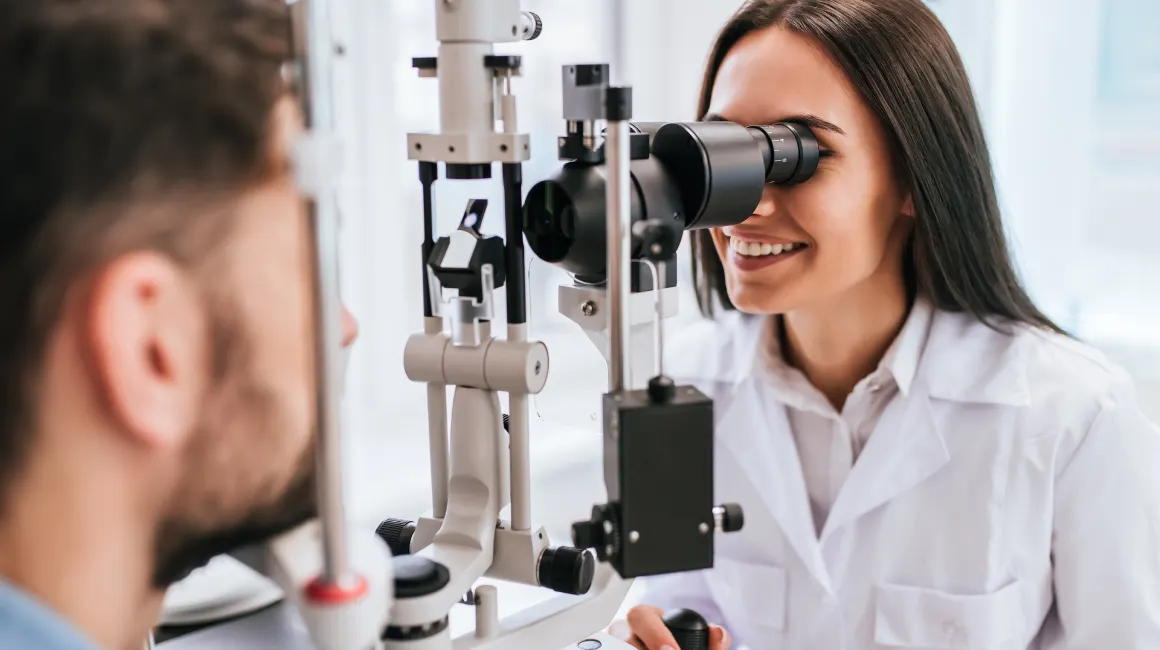
Visual acuity exam

Visual acuity exam
A visual acuity exam, also known as a vision test, is a routine examination used to assess an individual’s ability to see and interpret visual information. The test measures the sharpness and clarity of vision, including:
- Distance vision (far vision)
- Near vision (close vision)
The exam typically involves:
- Reading an eye chart (Snellen chart) with progressively smaller letters or numbers
- Covering one eye at a time to test each eye separately
- Measuring the distance at which the individual can see the letters or numbers clearly
Visual acuity is measured in units of 20/x, where x represents the distance (in feet) at which the individual can see what a person with normal vision can see at 20 feet. For example:
- 20/20: Normal vision
- 20/40: Vision is blurry at 20 feet what a person with normal vision can see at 40 feet
- 20/100: Vision is blurry at 20 feet what a person with normal vision can see at 100 feet
The visual acuity exam is performed by an eye care professional (optometrist or ophthalmologist) and is a crucial part of a comprehensive eye exam, helping to:
- Diagnose vision problems, such as nearsightedness, farsightedness, astigmatism, and presbyopia
- Monitor changes in vision over time
- Determine the need for corrective lenses (glasses or contacts) or other treatments
Note: While visual acuity exams are not directly related to dentistry, they are an essential part of overall health assessments, and dentists often work closely with eye care professionals to ensure patients’ overall well-being.


